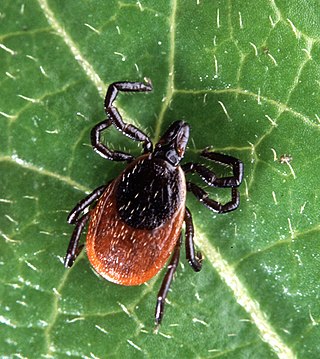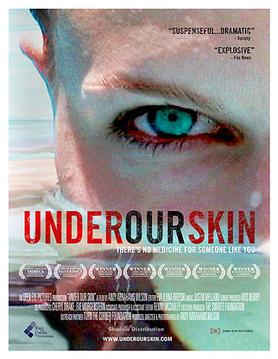Related Research Articles
Dengue fever is a mosquito-borne disease caused by dengue virus, prevalent in tropical and subtropical areas. It is frequently asymptomatic; if symptoms appear they typically begin 3 to 14 days after infection. These may include a high fever, headache, vomiting, muscle and joint pains, and a characteristic skin itching and skin rash. Recovery generally takes two to seven days. In a small proportion of cases, the disease develops into severe dengue with bleeding, low levels of blood platelets, blood plasma leakage, and dangerously low blood pressure.

Bell's palsy is a type of facial paralysis that results in a temporary inability to control the facial muscles on the affected side of the face. In most cases, the weakness is temporary and significantly improves over weeks. Symptoms can vary from mild to severe. They may include muscle twitching, weakness, or total loss of the ability to move one or, in rare cases, both sides of the face. Other symptoms include drooping of the eyebrow, a change in taste, and pain around the ear. Typically symptoms come on over 48 hours. Bell's palsy can trigger an increased sensitivity to sound known as hyperacusis.

Fatigue is a state of tiredness, exhaustion or loss of energy.

Lyme disease, also known as Lyme borreliosis, is a tick-borne disease caused by species of Borrelia bacteria, transmitted by blood-feeding ticks in the genus Ixodes. The most common sign of infection is an expanding red rash, known as erythema migrans (EM), which appears at the site of the tick bite about a week afterwards. The rash is typically neither itchy nor painful. Approximately 70–80% of infected people develop a rash. Early diagnosis can be difficult. Other early symptoms may include fever, headaches and tiredness. If untreated, symptoms may include loss of the ability to move one or both sides of the face, joint pains, severe headaches with neck stiffness or heart palpitations. Months to years later, repeated episodes of joint pain and swelling may occur. Occasionally, shooting pains or tingling in the arms and legs may develop.

Polyneuropathy is damage or disease affecting peripheral nerves in roughly the same areas on both sides of the body, featuring weakness, numbness, and burning pain. It usually begins in the hands and feet and may progress to the arms and legs and sometimes to other parts of the body where it may affect the autonomic nervous system. It may be acute or chronic. A number of different disorders may cause polyneuropathy, including diabetes and some types of Guillain–Barré syndrome.

Erythema migrans or erythema chronicum migrans is an expanding rash often seen in the early stage of Lyme disease, and can also be caused by southern tick-associated rash illness (STARI). It can appear anywhere from one day to one month after a tick bite. This rash does not represent an allergic reaction to the bite, but rather an actual skin infection of one of the Lyme bacteria species from the genus Borrelia. The rash's name comes from Neo-Latin for "migrating redness."

The Infectious Diseases Society of America (IDSA) is a medical association representing physicians, scientists, and other healthcare professionals who specialize in infectious diseases. It was founded in 1963 and is based in Arlington, Virginia. As of 2018, IDSA had more than 11,000 members from across the United States and nearly 100 other countries on six different continents. IDSA's purpose is to improve the health of individuals, communities, and society by promoting excellence in patient care, education, research, public health, and prevention relating to infectious diseases. It is a 501(c)(6) organization.
Allen Caruthers Steere is an American rheumatologist. He is a professor of rheumatology at Harvard University and previously at Tufts University and Yale University. Steere and his mentor, Stephen Malawista of Yale University, are credited with discovering and naming Lyme disease, and he has published almost 300 scholarly articles on Lyme disease during his more than 40 years of studies of this infection. At a ceremony in Hartford, Connecticut in 1998, Governor John G. Rowland declared September 24 to be "Allen C. Steere Day".

Myalgic encephalomyelitis/chronic fatigue syndrome (ME/CFS) has a long history with an evolution in medical understanding, diagnoses and social perceptions.

Under Our Skin: The Untold Story of Lyme Disease is a 2008 film advocating for the existence of "chronic Lyme disease", a controversial and unrecognized diagnosis. The film was directed by Andy Abrahams Wilson, who became interested in the subject after his sister claimed to be afflicted by "chronic Lyme." The film had its theatrical premiere on June 19, 2009 at the IFC Center in New York City.
The International Lyme and Associated Diseases Society is a non-profit advocacy group which advocates for greater acceptance of the controversial and unrecognized diagnosis "chronic Lyme disease". ILADS was formed by advocates for the recognition of "chronic Lyme disease" including physicians, patients and laboratory personnel, and has published alternative treatment guidelines and diagnostic criteria due to the disagreement with mainstream consensus medical views on Lyme disease.
Sini Anderson is an American film director, producer, performance artist, choreographer, dancer and poet, from Chicago, Illinois. Anderson is widely known for directing The Punk Singer (2013), a documentary about riot grrrl musician Kathleen Hanna's legacy and experience with late-stage Lyme disease.
Myalgic encephalomyelitis/chronic fatigue syndrome (ME/CFS) is a disabling chronic illness. People with ME/CFS experience profound fatigue that does not go away with rest, as well as sleep issues and problems with memory or concentration. The hallmark symptom is post-exertional malaise, a worsening of the illness which can start immediately or hours to days after even minor physical or mental activity. This "crash" can last from hours or days to several months. Further common symptoms include dizziness or faintness when upright and pain.

Yolanda Hadid is a Dutch-born American television personality and former model. She is best known as a star of the American reality-television show The Real Housewives of Beverly Hills. She is mother to IMG models Gigi, Bella, and Anwar Hadid.
The Tick-Borne Disease Alliance (TBDA) was an American national not-for-profit charity that was dedicated to raising awareness, supporting initiatives and promoting advocacy to find a cure for tick-borne diseases, including Lyme.
Chronic Lyme disease (CLD) is the name used by some people with non-specific symptoms, such as fatigue, muscle pain, and cognitive dysfunction to refer to their condition, even if there is no evidence that they had Lyme disease. Both the label and the belief that these people's symptoms are caused by this particular infection are generally rejected by medical professionals. Chronic Lyme disease is distinct from post-treatment Lyme disease syndrome, a set of lingering symptoms which may persist after successful antibiotic treatment of infection with Lyme-causing Borrelia bacteria, and which may have similar symptoms to those associated with CLD.

Unrest is a 2017 documentary film produced and directed by Jennifer Brea. The film tells the story of how Jennifer and her new husband faced an illness that struck Jennifer just before they married. Initially dismissed by doctors, she starts filming herself to document her illness and connects with others who are home- or bedbound with myalgic encephalomyelitis/chronic fatigue syndrome (ME).
Plandemic is a trilogy of conspiracy theory films produced by Mikki Willis, promoting misinformation about the COVID-19 pandemic. They feature Judy Mikovits, a discredited American researcher and prominent anti-vaccine activist. The first video, Plandemic: The Hidden Agenda Behind Covid-19, was released on May 4, 2020, under Willis' production company Elevate Films. The second film, Plandemic Indoctornation, which includes more interviewees, was released on August 18 by Brian Rose's distributor of conspiracy theory related films, London Real. Later on June 3, 2023, Plandemic 3: The Great Awakening was released on The Highwire, a website devoted to conspiracy theories run by anti-vaccine activist Del Bigtree.
References
- ↑ Gorski, David (20 May 2019). "Chronic Lyme disease: Fake diagnosis, not fake disease". Science-based Medicine. Retrieved 24 February 2024.
- ↑ Auwaerter, Paul G; Bakken, Johan S; Dattwyler, Raymond J; Dumler, J Stephen; Halperin, John J; McSweegan, Edward; Nadelman, Robert B; O'Connell, Susan; Shapiro, Eugene D; Sood, Sunil K; Steere, Allen C; Weinstein, Arthur; Wormser, Gary P (September 2011). "Antiscience and ethical concerns associated with advocacy of Lyme disease". The Lancet Infectious Diseases. 11 (9): 713–719. doi:10.1016/S1473-3099(11)70034-2. PMC 4489928 . PMID 21867956.
- ↑ Stahl, Stephanie; Kenworthy, Will (15 October 2023). "New documentary about Lyme disease, The Quiet Epidemic, is coming to Philadelphia - CBS Philadelphia". www.cbsnews.com. Retrieved 3 February 2024.
- 1 2 Gleiberman, Owen (10 May 2023). "'The Quiet Epidemic' Review: A Documentary About Chronic Lyme Disease Needs to Make the Case — and Does — That CLD Exists". Variety. Retrieved 3 February 2024.
- ↑ "Watch In the Know Videos Online - Yahoo Video". www.yahoo.com. Retrieved 2023-08-16.